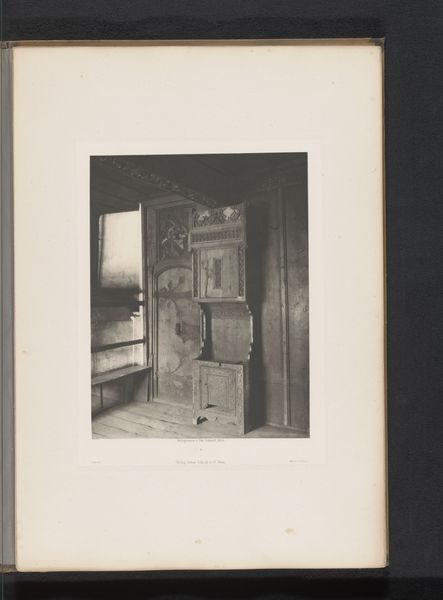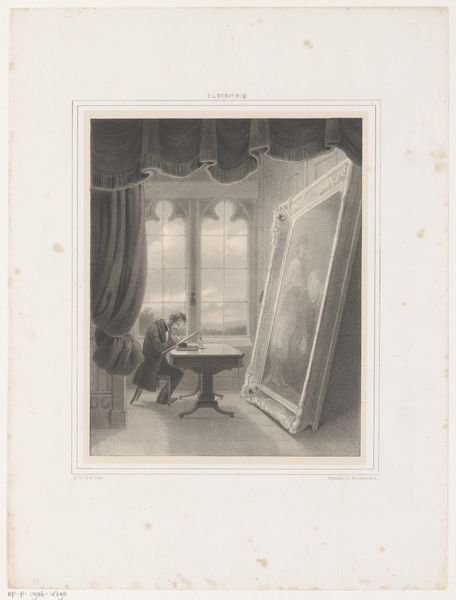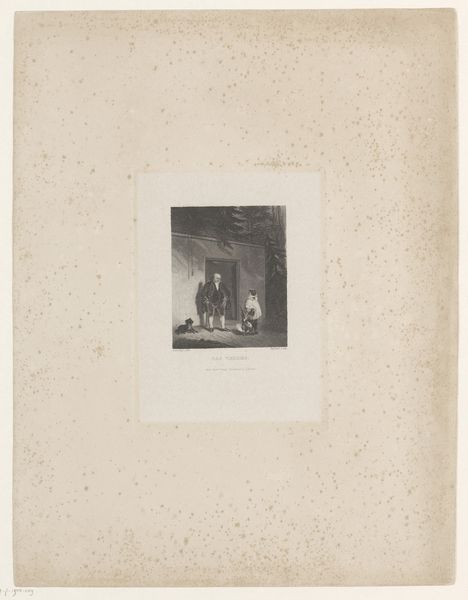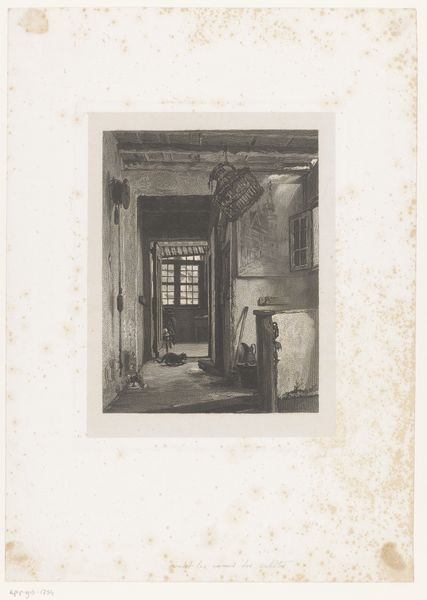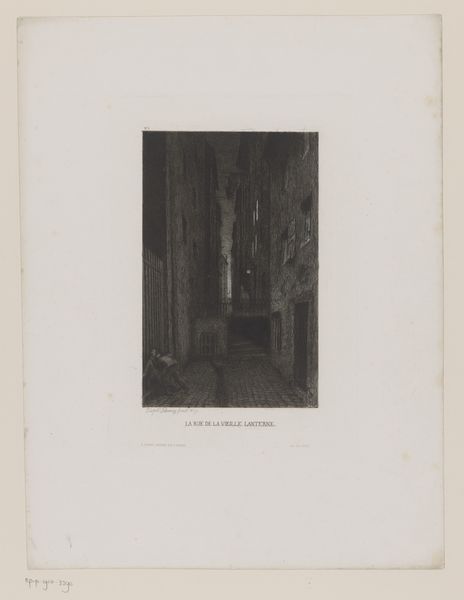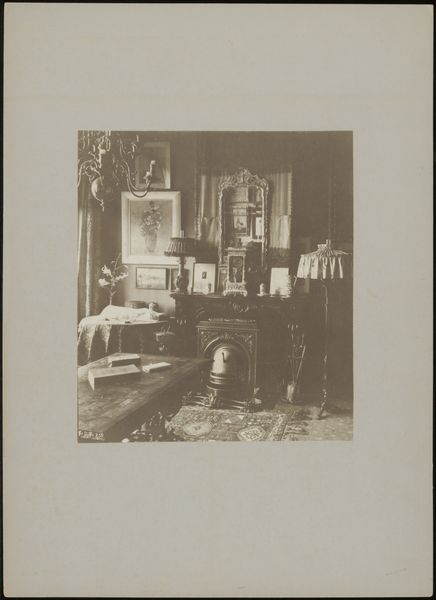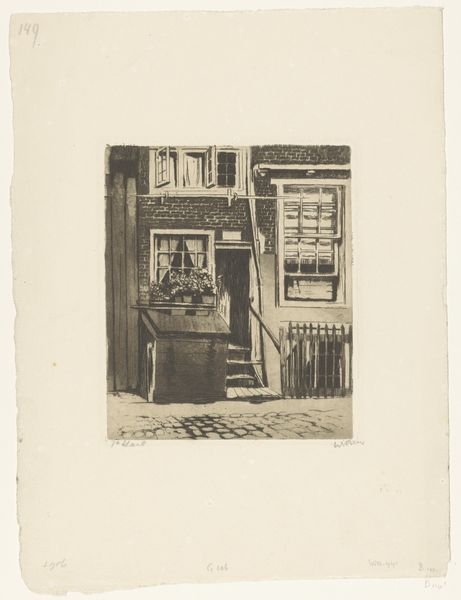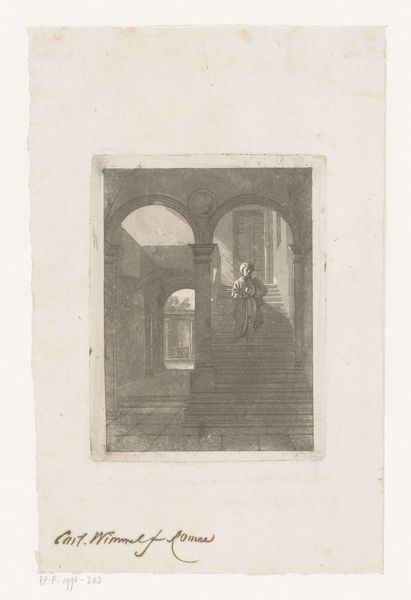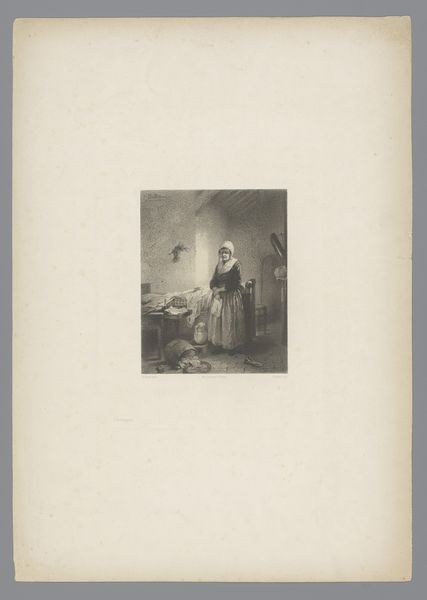
drawing, print, etching, paper
#
drawing
#
aged paper
# print
#
etching
#
paper
#
genre-painting
#
realism
Dimensions: height 240 mm, width 196 mm
Copyright: Rijks Museum: Open Domain
Curator: This is "Rembrandt etsend in zijn atelier," an etching by Paul Adolphe Rajon, created in 1869. There’s a quiet intimacy in how it depicts the great master at work. What’s your first impression? Editor: Claustrophobic, almost. The composition is so closed in. You’ve got Rembrandt hunched over his work, and then the large, dark screen looming in the background... it gives a sense of confinement and focus. Curator: Absolutely, and I think that adds to the image's psychological impact. Rembrandt, forever chasing a concept. We have that focused intensity visualized. He becomes almost hermetic, consumed by his creative pursuits. The way he bends over his etching plate symbolizes the struggle between reality and its re-creation through art. Editor: Right, it emphasizes the intense labor involved in artmaking. Rajon wasn't just romanticizing the artist. I see commentary on the male genius trope, almost demystifying the artist's role by showing the sheer effort that goes into creation. He’s boxed in, working! There is also the potential lack of light... how does it represent ideas? Curator: Very much so! The play of light here isn’t just about realism, but the symbol of intellectual illumination and its absence in art itself! It mirrors the era’s interest in portraying artistic practice realistically and showing an honest depiction of the art world instead of romanticizing a fictional view. Editor: It definitely disrupts the ideal, shining artist, but at the same time I can’t help but wonder, in centering Rembrandt here, how much does Rajon still reinforce the myth of the male master, intentionally or not? Especially when female artists of that time are still largely ignored? Curator: A fair critique, indeed. Even when attempting to humanize the artist, we must be cognizant of the socio-historical frameworks, for even realistic approaches may unintentionally exclude counter-narratives that disrupt traditional understandings of artists! What final thought does this prompt in you? Editor: That artistic representations are never neutral. They always carry ideological weight and continue the existing narrative surrounding labor, class, gender, and art. Curator: Well said! The artist, portrayed through shadow and symbolism, and its ability to echo both past artistic grandeur while also questioning the inherent power dynamics of creative representation.
Comments
No comments
Be the first to comment and join the conversation on the ultimate creative platform.
